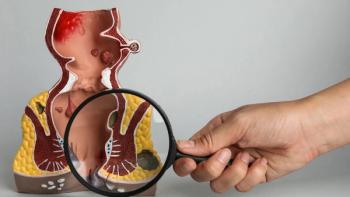
Why Physical Therapy Should Begin at the Time of a Cancer Diagnosis
Key Takeaways
- Early physical therapy initiation at cancer diagnosis can prevent or minimize treatment-related side effects, enhancing patient outcomes.
- Cancer treatments like surgery, chemotherapy, and radiation can affect skin, function, fatigue, energy, balance, strength, and range of motion.
CURE spoke with Leslie Waltke about the importance of physical therapy during a cancer journey.
For patients with cancer, discussions about physical therapy should begin at the time of diagnosis, as Leslie Waltke explained in an interview with CURE.
“If somebody has a back surgery, a knee surgery, a stroke, we don't wait six months to start physical therapy,” said Waltke. “We don't wait for people to have more and more problems before we initiate care.”
Waltke, a member of CURE’s advisory board, is a physical therapist and the founder of the Waltke Cancer Rehabilitation Academy based in Milwaukee. She spoke with CURE about the critical role physical therapy can play at the beginning of a cancer journey.
Transcript:
CURE: For patients with cancer, when is the right time to start talking about physical therapy with their care team
Waltke: At the beginning. So, if somebody has a back surgery, a knee surgery, a stroke, we don't wait six months to start physical therapy. We don't wait for people to have more and more problems before we initiate care. So, we really want physical therapy to begin right at the time of diagnosis, called peri-diagnosis or around diagnosis.
And every cancer has kind of a different starting point. Sometimes it's surgery, sometimes it's chemotherapy and/or radiation. But regardless of what the first cancer treatment is, that treatment, whether it’s surgery, chemotherapy or radiation, they all are well-known to create probable side effects that are going to affect skin, function, fatigue, energy, balance, strength, range of motion, all of those things that make us who we are. And we can either, with physical therapy early on, minimize those things, eliminate them or prevent them from happening in the first place.
This is all research based. We've studied this — so [we know] people who start physical therapy early do better than those who don't at all, and certainly do that better than those who start later. So, we really want again, regardless of whatever the first treatment is, that's when your physical therapy should start. Now, some people may have surgery first, and they don't have any problems. They come out of surgery, they don't have any pain, they don't have any limitations. They're like, “I feel great,” and that's fantastic. So they get dumped off the physical therapy train. But most people who have surgery are followed either with chemotherapy and/or radiation, and those treatment modalities can, again, create a completely different side effect profile.
So regardless of what you start with first, you want to have your physical therapist stay with you after surgery, during radiation, after radiation, during chemotherapy, after chemotherapy, and then certainly long into survivorship to help minimize loss, maintain strength, maintain function, keep you healthy, keep you strong, keep you pain free.
One of the largest or biggest terrifying moments for somebody when they hear the words “You have cancer” certainly is, “I don't want to die,” but also “I don't want to lose who I am.” I want to keep my job. I want to keep working. I want to stay independent. I don't want to have pain. I don't want to lose. And again, the best way to do that is with a physical therapist.”
Transcript has been edited for clarity and conciseness.
For more news on cancer updates, research and education, don’t forget to




